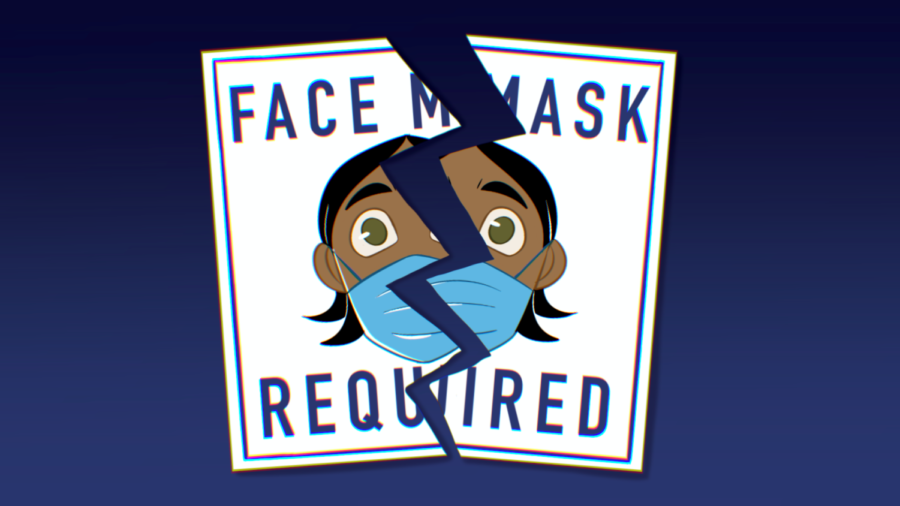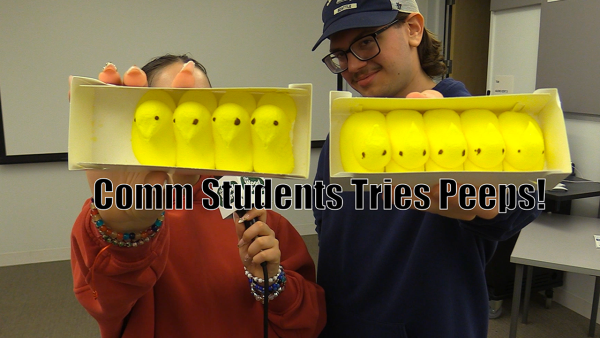EDITORIAL: Marywood shouldn’t jump to reduce pandemic restrictions
Photo credit/ Shania Nelson
Marywood University lifted its mask mandate for indoors on Monday March 7th.
After passing the two year milestone of the world shutting down due to COVID-19, the world is starting to shift back to pre-pandemic ways of life. That philosophy extends to higher education, and Marywood University is no different. Although the administration did not require vaccinations for the 2021-22 school year, many pandemic restrictions remained in place from previous semesters. As of now, it seems as if every restriction in place due to the pandemic has been lifted. However, the school should not have been in such a hurry to return to normal.
On Friday, March 4, just before Spring Break was to commence, Marywood’s Pandemic Coordinator Dr. Yerodin Lucas sent an email notifying the Marywood community that effective March 7, the indoor mask mandate on campus would be lifted.
While lifting restrictions that were put in place for the safety of those on campus is part of a return to normal, there should not be a rush to completely do away with them. A more structured approach like the University of Scranton has chosen to take seems more ideal. Vaccines are required for their students and faculty, and masking is only mandatory indoors in certain spaces, and only for those vaccinated and boosted. Marywood should take their time reducing restrictions, as public health in a pandemic is a marathon, not a sprint.
There are over six million deaths attributed to COVID-19 worldwide, and the United States alone is nearing the one million mark in deaths from the virus, according to the World Health Organization (WHO). In Pennsylvania, the Department of Health has recorded 44,091 deaths from COVID-19 as of March 22.
With these numbers in mind, it’s not convincing that we are entirely done with the pandemic, nor is it done with us. Of course, wearing a mask is bothersome, but, as health professionals have pointed out, it is more comfortable than a ventilator.
A more gradual, planned approach would have been better in regards to rolling back mask restrictions. Starting with faculty who are vaccinated now, for accessibility reasons like lip reading, would have been a good first step. The next step could be either letting vaccinated students go maskless, or just waiting until the fall to do away with the rule entirely. The sudden shift during the semester was jolting.
In easing restrictions, Marywood needs to be consistent. Going forward, clear communication between administration, faculty, and students is key to a better understanding. The administration is pushing itself in a corner with the sudden and total reversal of pandemic protocols. If cases are to spike again, or a new variant emerges, will it be difficult to re-enforce masking and social distancing rules after giving the community the taste of freedom?
Of course it’s easy to want to be back to normal. But it’s important to be cautious. The pandemic has taught us that sometimes things are simply out of our hands.
Despite this, some of the ideas or protocols in place during the pandemic should stay well beyond it. The HyBridge model, which provided generous accessibility to students, should still be allowed to function in a pandemic-less society. Marywood was eager to do away with that model despite the benefits it could provide. Students should have the option to pursue their education at Marywood to their comfort and accessibility level.
One part that makes having that level of accessibility difficult is the lack of resources and technology. Not every aspect of the university is equipped to handle both in person and online learning. Despite this, the resources the pandemic provided for us in terms of accessibility should not be discarded entirely.
Attendance was not held against a student during the early stages of the pandemic if they were not feeling well. Attendance policies are on a course by course basis, but an across the board rule might make the transition back to normal easier. Ideally, students wouldn’t miss class unless they are sick, but life happens sometimes.
A possible way to remedy this would be to offer absences the same way workplaces do, with excused sick days and one or two excused absence days that can be used for any reason besides illness. Another option would be to bring back the HyBridge model to allow for students to join a class via Zoom so they don’t miss out on their education while sick, and updating every classroom on campus to provide such accessibility.
Ultimately, the university has the chance to ease out of pandemic restrictions in a seamless manner. By listening to students, faculty, staff and the community, as well as recommendations by health officials, pandemic guidelines can stay or go. The goal should not be to bring Marywood back to life before the pandemic, but to use the pandemic as a tool to lift Marywood to a new and improved life after the pandemic.
Contact us: [email protected]










